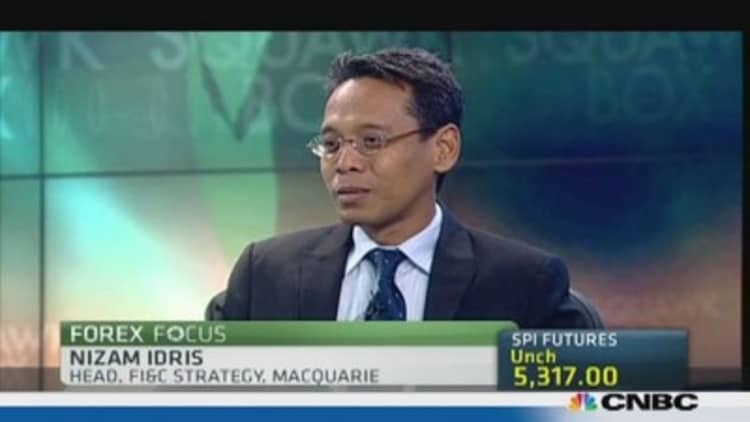The dollar rose to a five-year high against the yen on Thursday on expectations the Federal Reserve will continue to withdraw its stimulus next year while the Bank of Japan may ease further.
The greenback rose as high as 104.84 yen, according to Reuters data, surpassing last week's high of 104.63 yen. It last stood at 104.69 yen, up 0.3 percent on the day.
Option-related offers at 105 yen are seen as a major hurdle for the dollar to advance further and some traders suspect this resistance level may not be broken until next month, when more market participants return from holidays.
Most financial centers in Europe and the Americas were closed for Christmas on Wednesday, with many shut on Thursday as well.
Yen-selling could be a favorite trade among investors next year because they expect the Bank of Japan to maintain, or even enhance, its ultra-easy policy to conquer deflation. That contrasts with the Fed's move last week to begin reducing its stimulus, although it has said it still intends to keep interest rates low for a long time.
"The diverging policy outlook is what's really driving the yen lower,'' said John Doyle, currency strategist at Tempus in Washington, D.C.
The rose 0.1 percent to $1.3691, some way off last week's high of $1.3811, though the single currency has been on solid ground on the whole in the last several weeks.
While the euro zone's recovery is seen as sluggish, the currency has been underpinned by European banks' repatriation as well as buying by euro zone exporters as the euro zone's current account surplus has increased sharply.

The euro also hit a five-year high of 143.52 , and was last up 0.4 percent to 143.34 yen.
The dollar gave back some of the gains following news that Japanese Prime Minister Shinzo Abe visited the controversial Yasukuni Shrine for the war dead, a move that could worsen strained Sino-Japanese relations and hurt investors' risk appetite.
The dollar index, which tracks the greenback against a basket of major rivals, was last flat at 80.49 and not far from last week's high of 80.82.
Data on Thursday showed the number of Americans filing new claims for unemployment benefits fell last week to the lowest level in nearly a month, a hopeful sign for the labor market.
Rising U.S. yields have also supported the dollar because they are likely to encourage investors to buy more dollar bonds.

The yield on 10-year U.S. notes touched 3.0 percent on Thursday, near the two-year peak of 3.007 percent hit in September.
Rising U.S. yields are generally positive for the dollar because they are likely to encourage investors to buy more dollar bonds.
Higher U.S. bond yields could also destabilize risk assets, particularly those in emerging markets. That could prompt investors to buy ``safer'' currencies, including the dollar.
"Initially the Fed appears to have succeeded in curtailing rate hike expectations. But U.S. bond yields have risen since then, and we need to keep an eye on them for implications on risk asset prices,'' said Junya Tanase, chief FX strategist at JPMorgan Chase in Tokyo.
The slipped 0.3 percent against a broadly supported U.S. dollar to $0.8884, edging near three-year low of $0.8860 hit last week.

